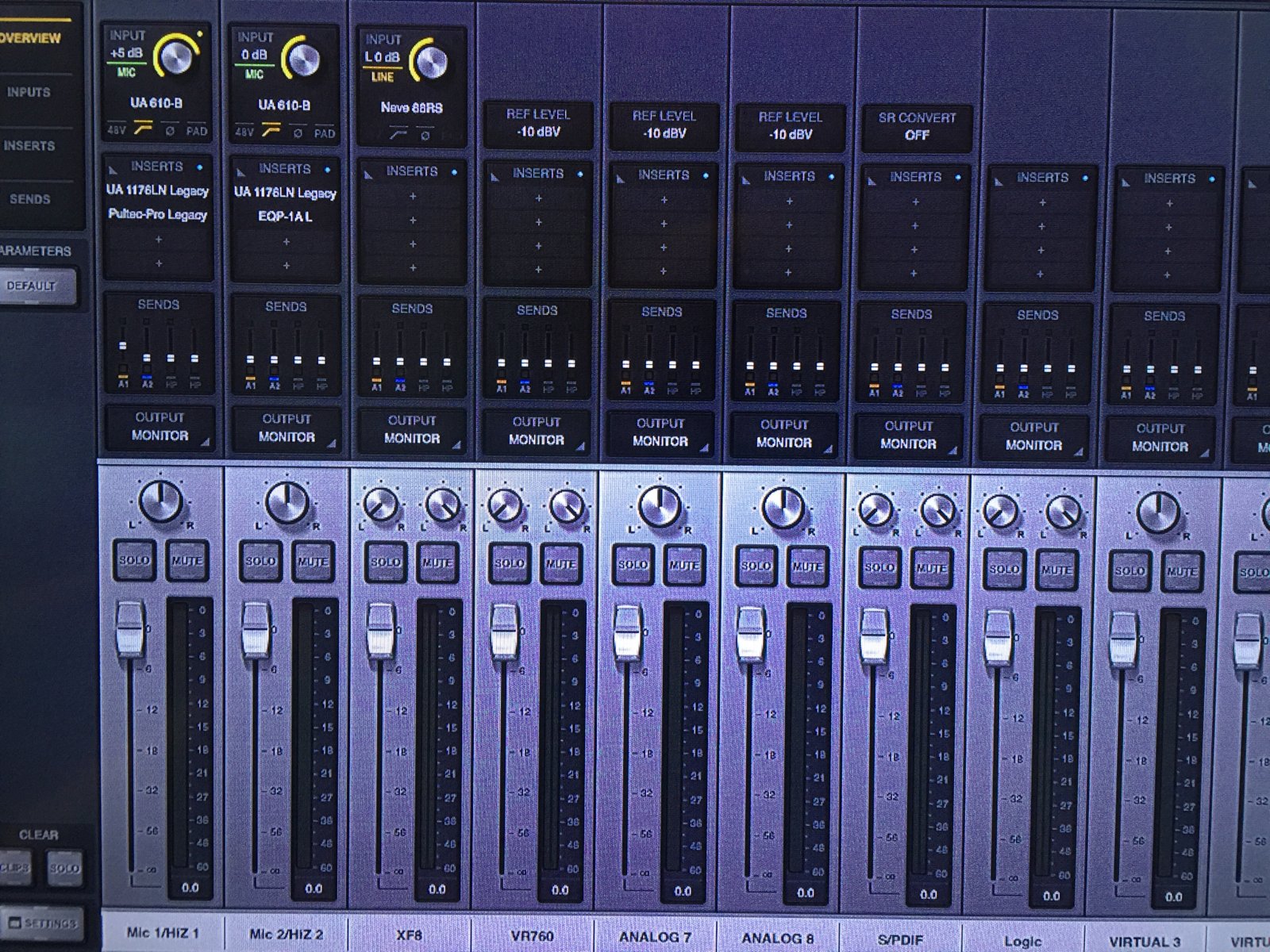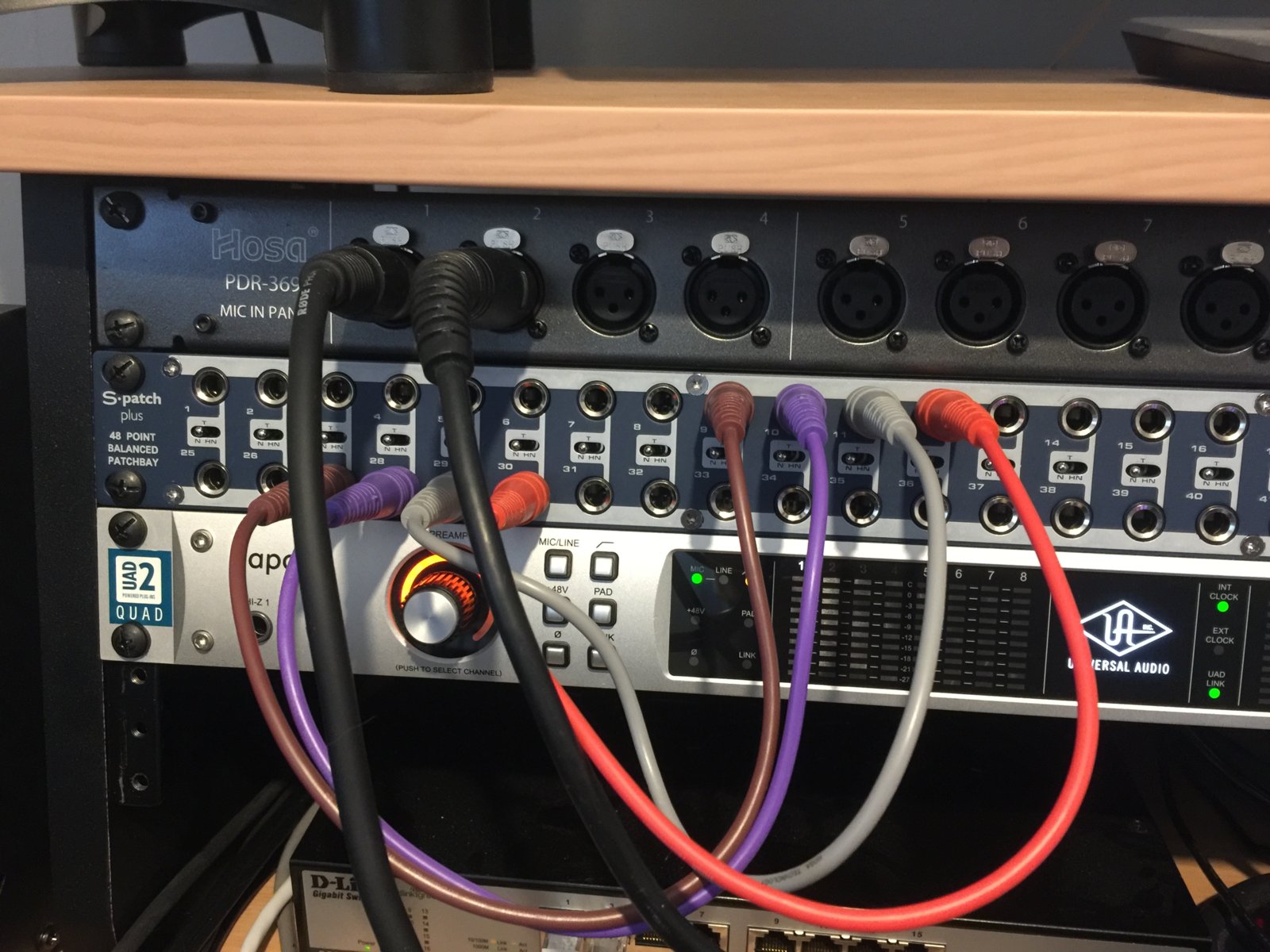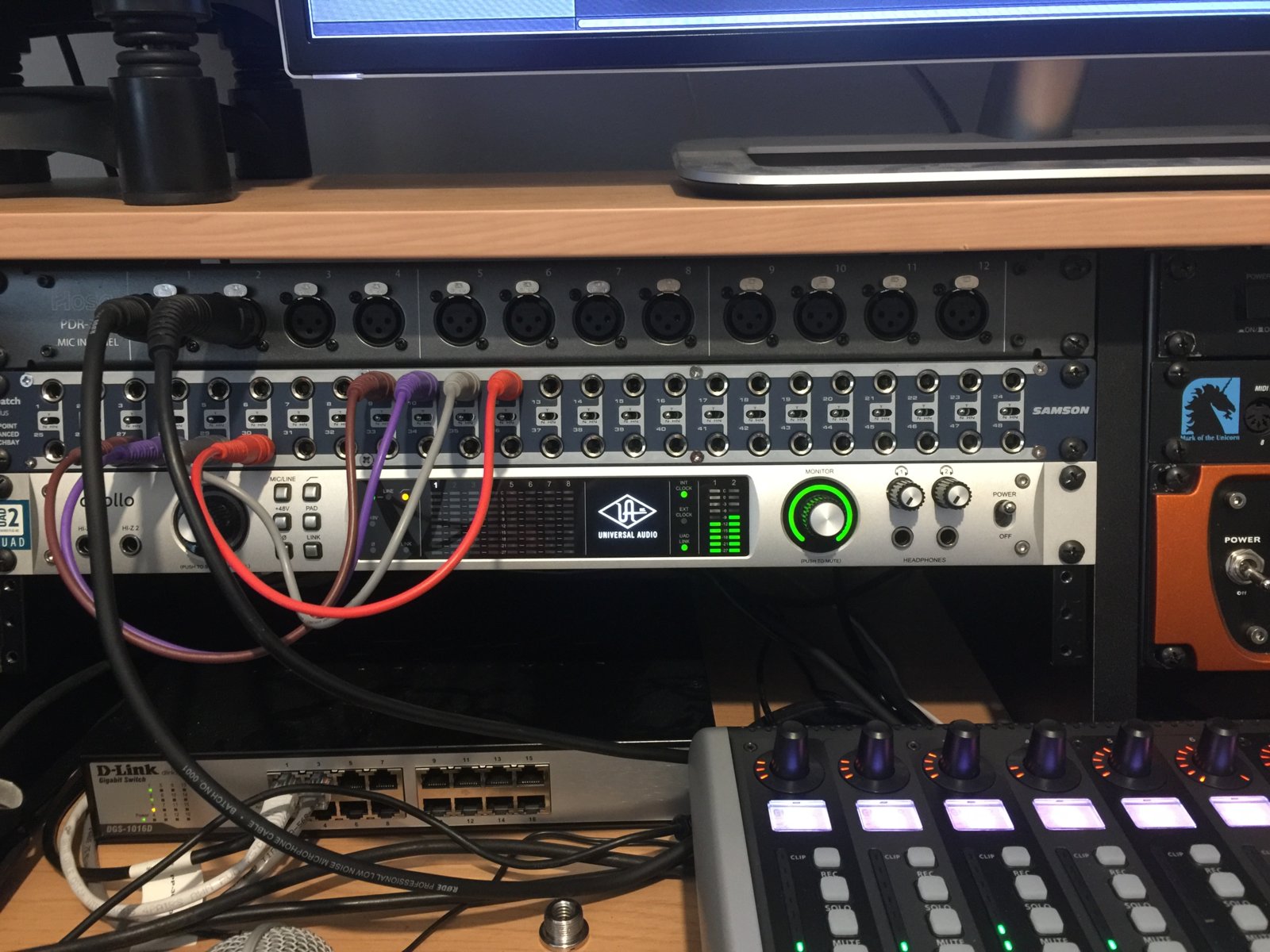I've taken the plunge... I found a Apollo Quad firewire going for only £1290 on ebay, 8 mths old like new. I figure since I am not going to spend an awful lot more these days, that's going to be a BIG upgrade from my MOTU Traveller MK3, along with the fact I also have the UAD2 Quad PCIe card in my Mac Pro already. Also, down the track, I can fit a Thunderbolt interface into the Apollo if wanted :D.
Unison and the over performance boost to 800fw instead of 40ofw on the MOTU has drawn me in. Here's hoping I don't regret it :-/. Good news is, sale of the Eventide DSP4000b+ and a Roland Cube Ex funded this, keeping the wife happy LOL.
Topic Tags
Comments
Oh yes, it works a treat. Best of all, it solved a latency issue
Oh yes, it works a treat. Best of all, it solved a latency issue I didn’t even know I had (motu). My songwriting mate and I have tried 86 times to get a bass line done. It sounded in time played a number of times... however played back, it was awful. Apollo to the rescue, plugged bass into hi-z1 and set some monitored amp etc. Bingo third take after he got over shock of it being in time. Amazing what I was missing after having to sell my Orion and RME setup.
I’ve had some odd latency type issues with the built in processi
I’ve had some odd latency type issues with the built in processing of a Motu interface’s internal processing. There’s a pretty decent jump in DSP bandtwith (processing power) between the TB and FW connection on the Apollo.
If I remember correctly from my cousins Apollo rack you had to physically unplug the direct jack to use the line or pre, but I could be wrong. I remember something being confusing in that area.
It’s a good Interface if dsp is the primary over the conversion side of it. The converters are a step up from motu but not what I’d call a huge step. I think with clean instruments and amps, and vocals they’re good, but with high gain, high harmonic content like a Marshall amp, they lag behind a bit.
You get a very solid bit of connectivity and functionality, and a very well rounded unit for the money. It’s probably the best all around unit out there, especially with the ability to use high end dsp on any computer that can record raw audio. And it does have the Digital connectivity for adding a couple channels of premium conversion, so it allows for growth in the right areas, without being redundant, or rendering other things obsolete.
I found the seperate mix screen for the Apollo a bit odd, I initially thought you could just open the pluggins right within the daw and be done, but it’s not quite that seamless yet.
That said the mix screen is controllable by some control surfaces too so that’s cool. I’m sure the whole thing isn’t too difficult to get used to.
You may want to leave some space above it in the rack for ventilation, the Apollo does get pretty warm.
Congrats on your purchase, glad your enjoying it!!
@kmetal I’ve so far found the whole experience with the Apollo l
kmetal I’ve so far found the whole experience with the Apollo less fiddly than either the MOTU or my Orion 32/RME HDSPe setup I had before. It gives off far less heat than the Orion did btw :). But anyway, I do have it well ventilated. I’m never going to be worrying about expanding now.
We used a amp simulator for the bass take last Wednesday, along with a unison ua610b preamp in place. The result was awesome. I love that the Apollo switches mode automatically when you plug into one of the high Z inputs. Along with using my patch bays I’m always connected just how I want.
Tony
Makzimia, post: 453153, member: 48344 wrote: @kmetal I’ve so far
Makzimia, post: 453153, member: 48344 wrote: kmetal I’ve so far found the whole experience with the Apollo less fiddly than either the MOTU or my Orion 32/RME HDSPe setup I had before. It gives off far less heat than the Orion did btw :). But anyway, I do have it well ventilated. I’m never going to be worrying about expanding now.
We used a amp simulator for the bass take last Wednesday, along with a unison ua610b preamp in place. The result was awesome. I love that the Apollo switches mode automatically when you plug into one of the high Z inputs. Along with using my patch bays I’m always connected just how I want.
Tony
Cool man, sounds like you got something that fits your workflow well. Glad your enjoyment it. Those amp sims have me interested.
@DogsoverLava, which part?.
DogsoverLava, which part?.
@DogsoverLava ok, so, not feeling Herculean this morning, didn’t

 DogsoverLava ok, so, not feeling Herculean this morning, didn’t move the desk.. but anyway. I’m attaching photo closer to where patch bay selections on front are. In the rear I have mic preamp 1 and 2 going to the xlr only patch bay. This allows me to use the two mics I normally only ever need. If I want more obviously I can patch 3 & 4 in too. I normally use 3 & 4 as a pair for my XF8 Yamaha though.
DogsoverLava ok, so, not feeling Herculean this morning, didn’t move the desk.. but anyway. I’m attaching photo closer to where patch bay selections on front are. In the rear I have mic preamp 1 and 2 going to the xlr only patch bay. This allows me to use the two mics I normally only ever need. If I want more obviously I can patch 3 & 4 in too. I normally use 3 & 4 as a pair for my XF8 Yamaha though.
Outputs from Yamaha XF8, Roland VR760 and Yamaha TX81z come in top of regular 1/4 inch patch bay at 9 - 14, precededed by 3-8 of outputs of Apollo. Monitor outs go direct to monitor controller.
As you’ll see in Apollo console I can run up to 4 preamps in unison mode, 2 are mono in my setup, 2 are paired in this shot with a neve 88rs on unison for the incoming XF8.
I currently use direct from logic to the monitor outs, no issues, but, some use the virtual console sends to almost completely eliminate latency, like 1.5ms?.
Almost forgot, Apollo switches automatically to HiZ if plugged into, so I don’t need to patch front sockets, obviously. Headphone feeds are handled by my monitor controller.
Hope that helps?.
Tony





Does the Quad come with internal DSP for UAD plugs? If so, that
Does the Quad come with internal DSP for UAD plugs?
If so, that will take a pretty big weight off of your workstation's CPU, if you do happen to use several instances of plug ins on your mixes.
I know a few guys who are using the UAD Unison technology - although I think they are all using Thunderbolt - and they like how they have the option of being able to track through plug ins, and adding color on the way in, if they wish.
Can you keep us in the loop and let us know how the Quad works out for you? ;)
-d.